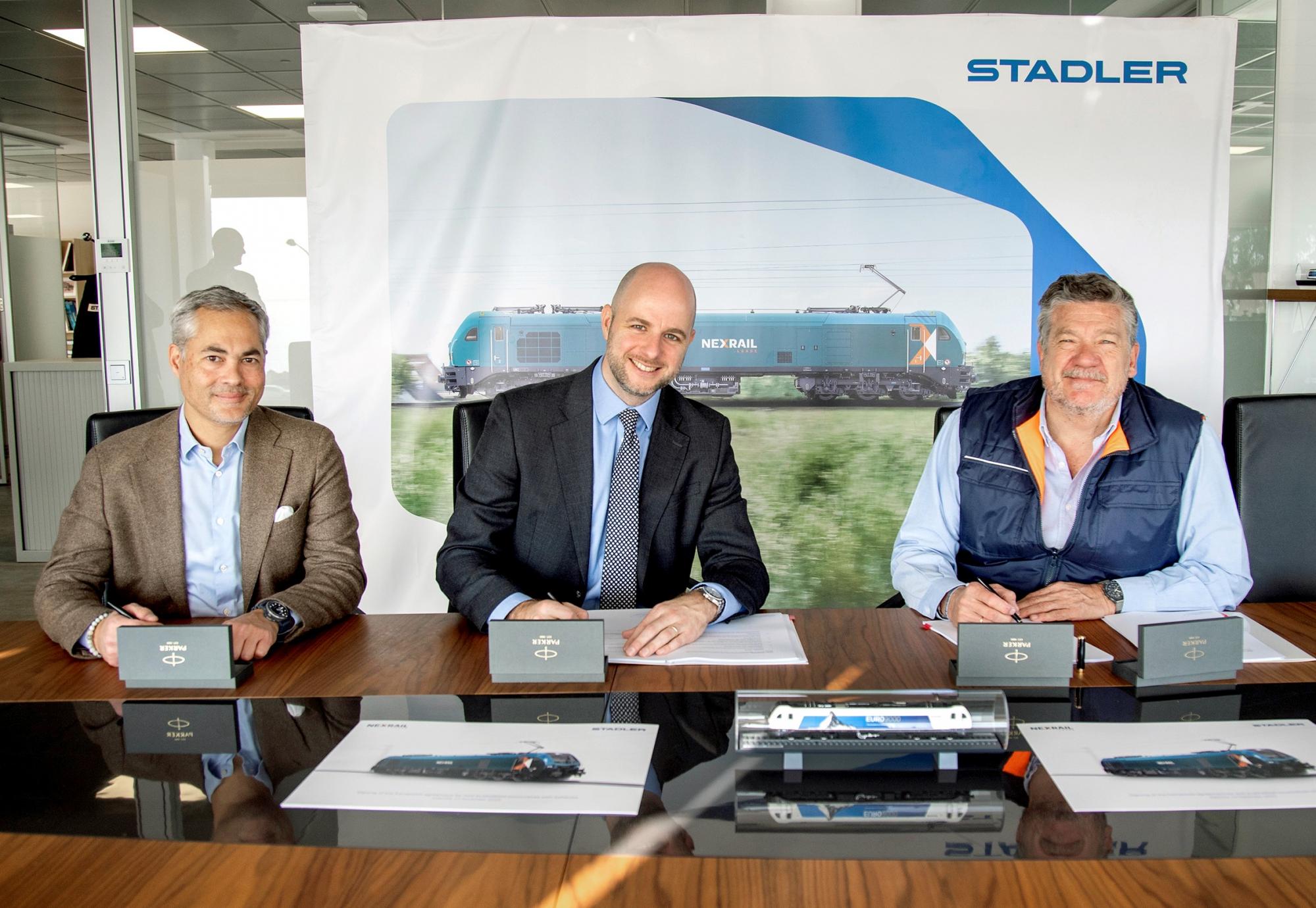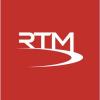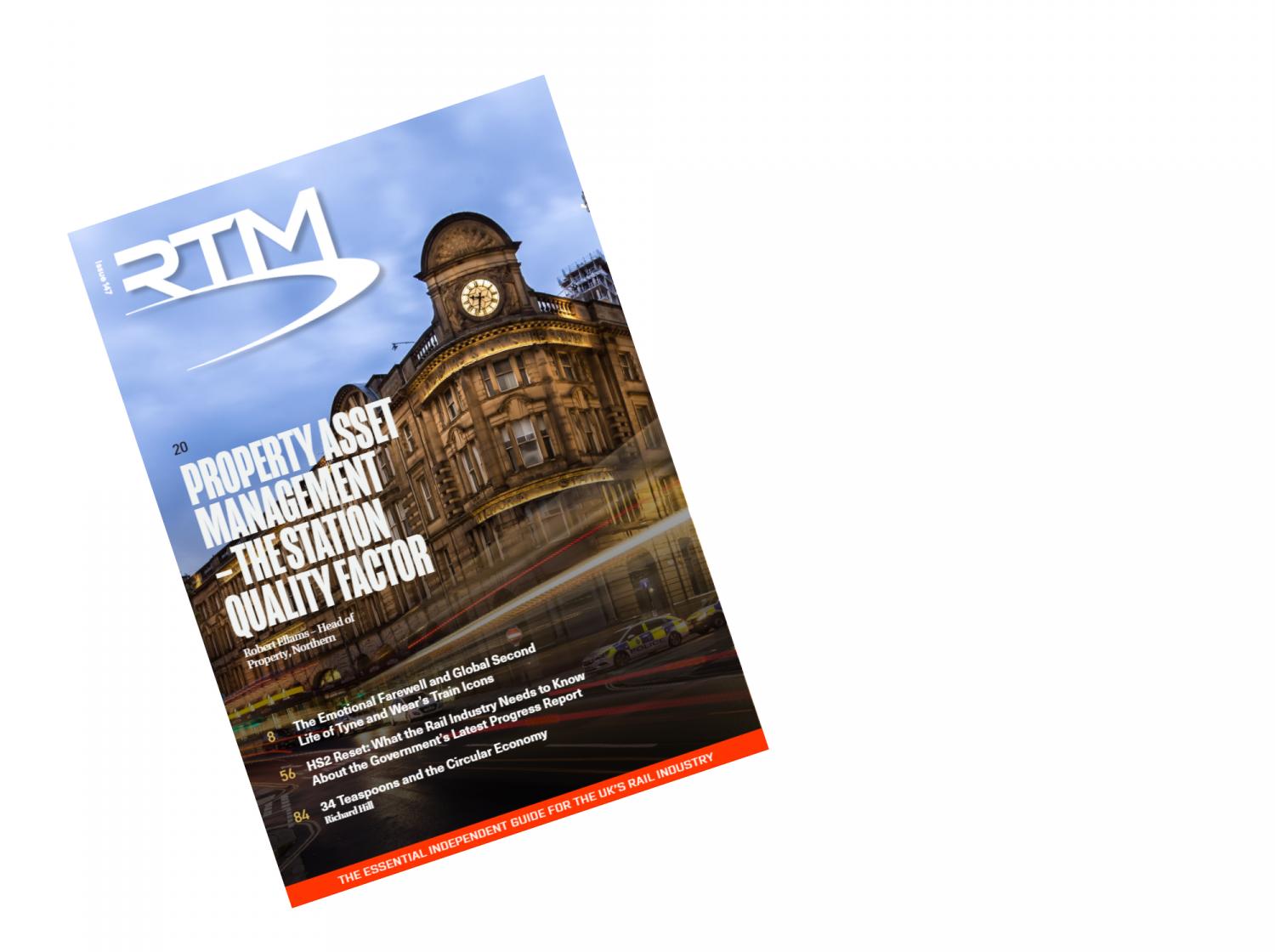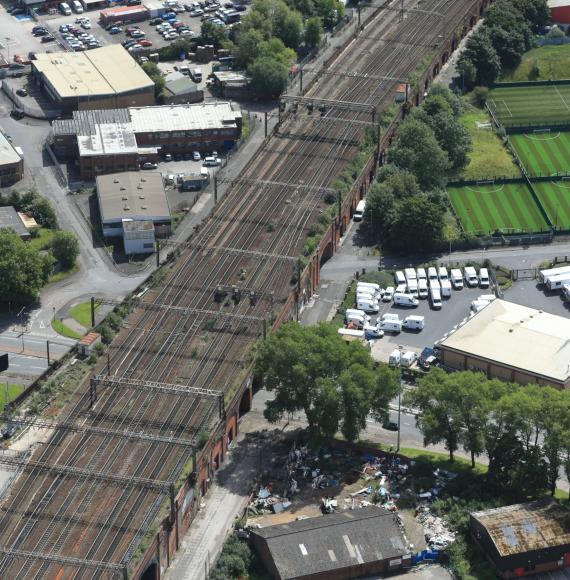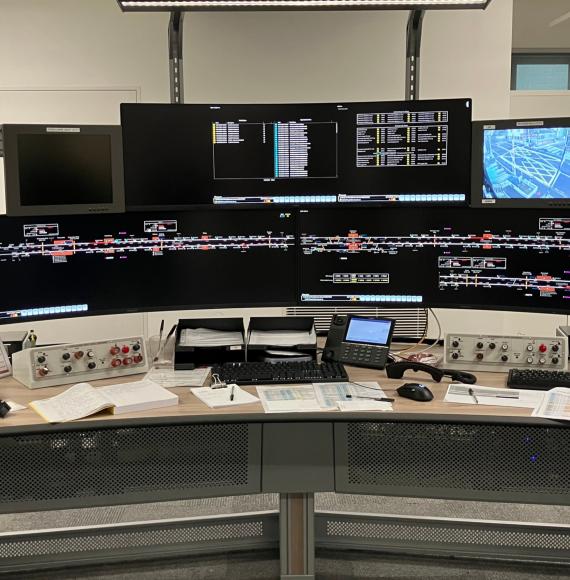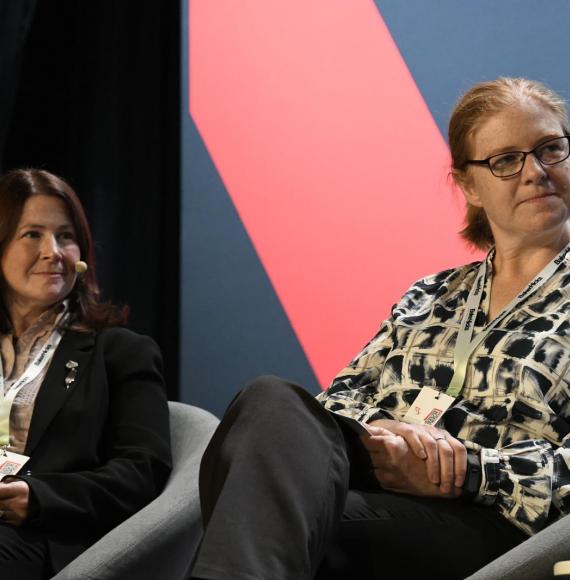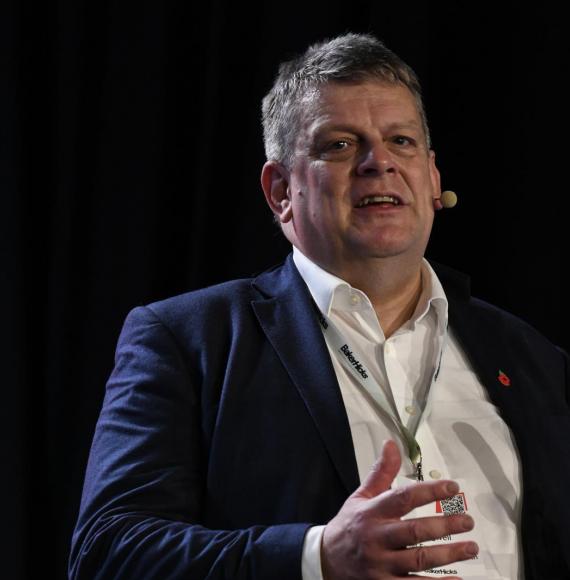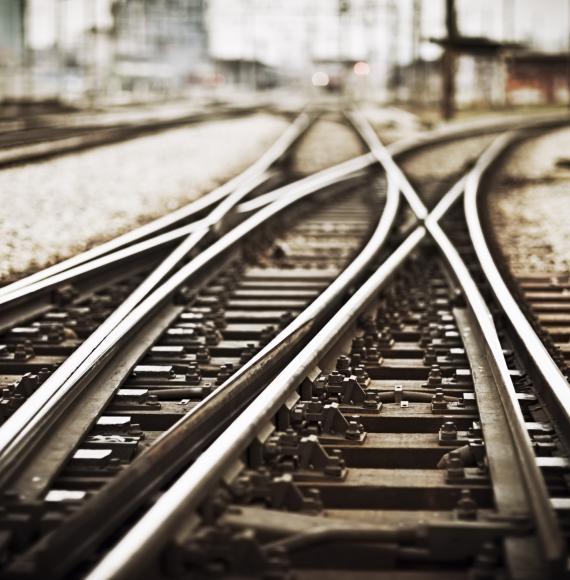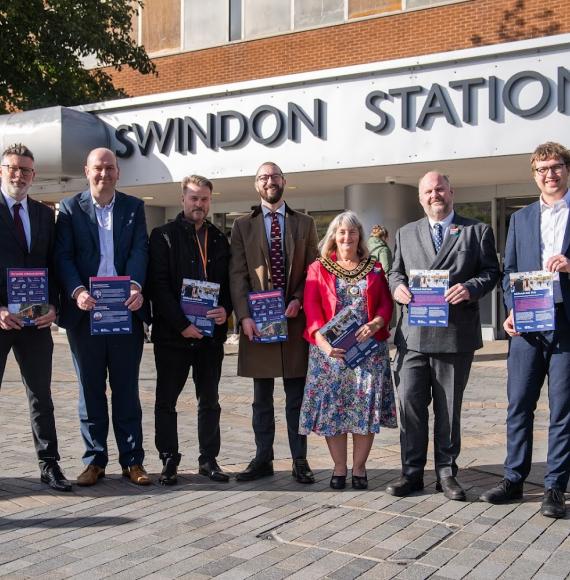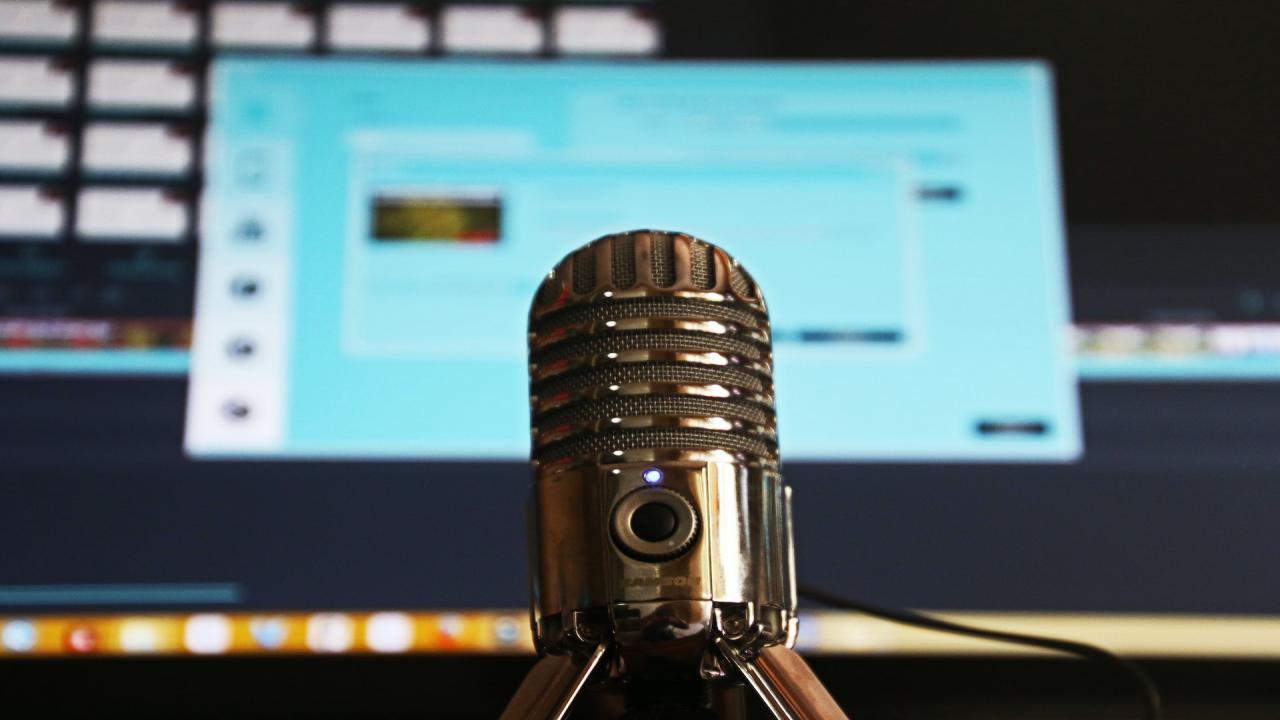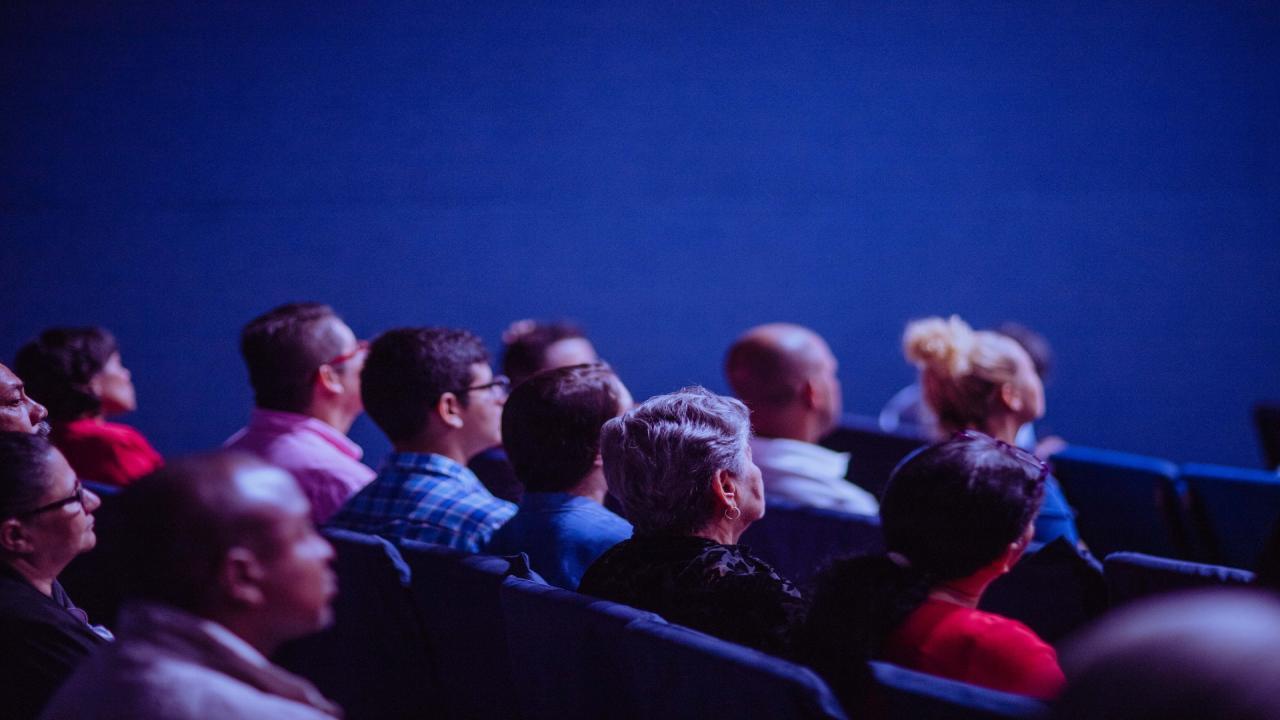NEXRAIL has placed an order with Stadler for up to 200 EURO9000 panto-battery hybrid locomotives, marking a major step towards zero-emission rail transport across Europe.
The EURO9000 combines up to 9MW of pantograph power with 1.2MW of high-performance battery power, making it the first mainline corridor locomotive capable of delivering terminal-to-terminal zero-emission operations. Its smart battery module offers advanced features such as brake energy storage, peak shaving, and energy trading, reducing costs and improving efficiency.
Built on Stadler Valencia’s proven six-axle Co’Co’ platform, the EURO9000’s multi-system architecture ensures seamless cross-border operation between Germany, Austria, Belgium, the Netherlands, Switzerland, and Italy. First deliveries are expected in 2029, with Hamburger Rail Service GmbH & Co. KG (HRS) as the launch customer.
Stadler Valencia’s CEO, Iñigo Parra, said:
“We are proud to support NEXRAIL in bringing the EURO9000 battery-bimodal locomotives to market.
“This order highlights our joint commitment to sustainable innovation in rail freight. By combining high-power electric performance with emission-free battery operation, the EURO9000 sets a new benchmark for flexible, green traction solutions across Europe.”
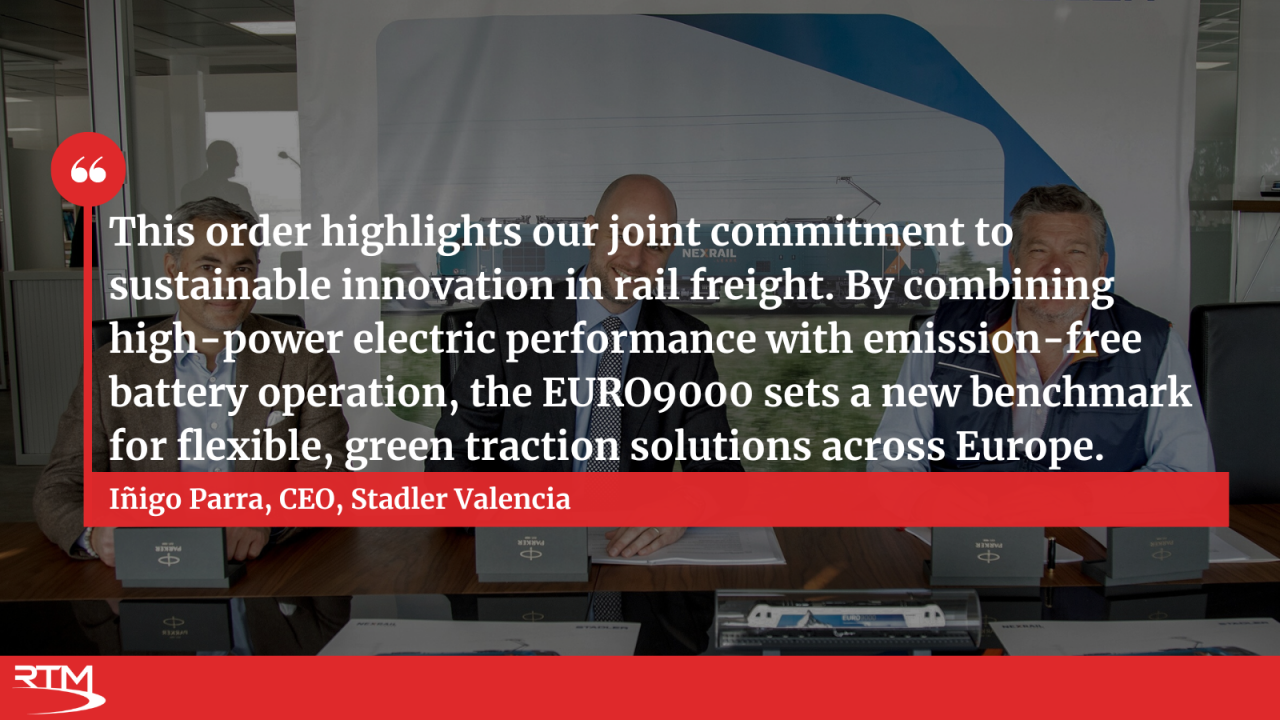
Key benefits include:
- Single-traction capability on challenging terrain, including trans-alpine corridors, eliminating the need for bank locomotives.
- Battery boost on weak DC networks for improved performance and heavier loads.
- Smart battery management system optimising regenerative braking, reducing peak consumption charges, and enabling energy cost arbitrage.
Luuk von Meijenfeldt, CEO of NEXRAIL, added:
“NEXRAIL is excited to lead the European locomotive market toward a zero-emission future. The Stadler EURO9000 is an important step forward in that transition because it eliminates the needs for diesel traction and offers freight operators completely new benefits of having battery storage on board.”
These innovations make the EURO9000 more versatile and cost-effective than traditional models, supporting Europe’s transition to sustainable rail freight.
Image credit: Stadler Rail

